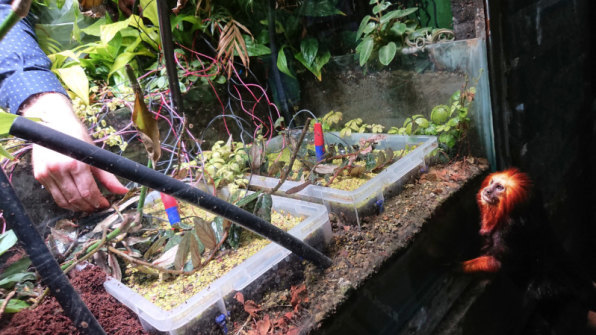Self-portraits have become an integral part of many people’s lives, and even some people paid the price of their lives for self-portraits. But you may not think that plants now learn to take selfies.

▲ Image from: unsplash, Antoine Beauvillain
This self-portrait is a fern called Pete. Of course, this plant does not become refined and does not have a sense of autonomy. How does it achieve self-portraits?
This is actually a Microbial fuel cell experiment, plant growth process The energy produced by the cells is converted into electrical energy, which powers the camera attached to the plant.

Al Davies, a conservation technology expert at the London Zoological Society Introduction, which accumulates biomass energy during plant growth, provides nutrients to bacteria in the soil, and produces a quantity that can be used in microbial fuel cells to provide remote care equipment. Power, including sensors, monitoring platforms and cameras.

The benefit of this microbial fuel cell is that it can be self-sufficient, does not require battery replacement, and is not as susceptible to sunlight as a solar panel.
Plants can grow in a cool environment and adjust to the position that absorbs the most sunlight, which means that the potential to use plant power is unlimited.
Although plants can continue to supply electricity, the energy produced by a plant is actually very limited, only a few hundred millivolts of voltage and microamperes of electricity. Such a small amount of electricity can run a camera, thanks in large part to AI.

Xnor Hardware Engineering Manager Saman Naderiparizi represents, relying only on ferns The voltage generated by the plant is not even enough to run the micro controller. Therefore, to store this electric energy, when the capacitor is stored, the AI module goes to sleep and consumes almost no power. When the energy storage is completed, the AI module can be activated. .
When Xnor’s low-power camera starts running, it will recognize the “Pitt” selfie through the AI model and store the picture in flash memory. Because of the extremely low power of this camera, you can rely on the power provided by the plant for 24 hours. Uninterrupted operation, currently “Pitt” has been able to take a picture every 20 seconds.

This technology can be used in remote extreme environments where humans are difficult to get involved, by monitoring temperature, humidity and plant growth to better understand natural threats such as climate change and habitat loss.
At the same time, the “plant self-timer system” like “Pete” can also be used for monitoring tropical rain forests, preventing forest fires and protecting endangered wildlife. Because of the huge size of the forest, it used to rely on aircraft to evaluate it over the forest, which was costly and limited in accuracy.
In the vision of Xnor co-founder Ali Farhadi, we will be surrounded by billions of devices, and all devices run a variety of AI. Rather than relying on expensive and energy-intensive data centers, it’s better to give more work to technologies like Pete to power equipment through plants and sunlight.
The title map is from: Reddit, and some of the maps are from: Xnor